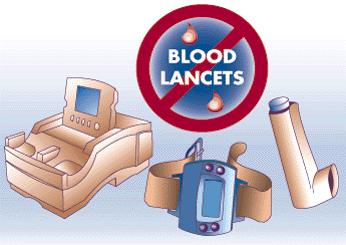Lilia Malkin, BSc
Diabetes mellitus (DM) is estimated to affect approximately 1.5 million Canadians and 135 million people worldwide.1,2 This article will review some of the recent advances in diabetes care and prevention, including non-invasive glucose monitoring, insulin delivery systems and "vaccination" to prevent the development of type I DM.
Maintenance of a physiologically appropriate blood glucose (BG) level is an essential component of diabetes control, as it has been shown to play an important role in reducing the debilitating sequellae of DM.3,4 For many patients, good diabetes control may involve not only carefully planned meals, appropriate exercise regimens, and oral medications, but also interventions that may be invasive and painful, such as frequent BG monitoring and insulin injections. Decreasing or eliminating the discomfort associated with some of the more invasive procedures is likely to increase patients' compliance with therapeutic regimens, resulting in improved control of the disease.

The recent advent of minimally- and non-invasive BG monitors has the potential to replace, or at least decrease the use of the traditional "finger-prick" apparatus for the multitude of patients who require self-monitoring of BG levels.

